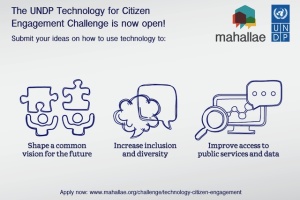 Many low-cost information communication technology (ICT) -based tools already exist to help nonprofits, non-governmental organizations (NGOs), government programs and other mission-based initiatives to collect and share data on a large-scale, real-time basis. In fact, handheld computer devices have been used in various humanitarian, environmental and disaster-relief efforts since the late 1990s (when they were called PDAs, or personal digital assistants – you couldn’t use them to make a phone call but you could use them to gather data).
Many low-cost information communication technology (ICT) -based tools already exist to help nonprofits, non-governmental organizations (NGOs), government programs and other mission-based initiatives to collect and share data on a large-scale, real-time basis. In fact, handheld computer devices have been used in various humanitarian, environmental and disaster-relief efforts since the late 1990s (when they were called PDAs, or personal digital assistants – you couldn’t use them to make a phone call but you could use them to gather data).
However, there isn’t a central place where organizations can access ICT-based tools and assess information so they can understand the features, the pros and the cons of different tools.
The Kopernik Impact Tracker Technology online catalogue is an effort to fill this gap, providing recommendations that assist users in making decisions about digital data collection apps, SMS communication platforms and more. The online catalogue is designed for small to medium-sized social enterprises or a nonprofit organizations working in international development or humanitarian emergencies with a main office that is located in an urban area with decent infrastructure and has access to slow to medium internet connection. But any nonprofit or NGO, or any government agency, anywhere, can use these tools. This project is fully supported by the Impact Economy Innovations Fund in East and Southeast Asia, funded by the Rockefeller Foundation and Asia Community Ventures.
The catalogue includes information on:
- Digital data collection apps utiliize mobile phones and tablets to collect, store, and transmit data. These apps allow for paperless and more accurate data collection processes. Organizations can use these apps to collect qualitative and numerical data from the field, as well as capturing multimedia data or pinpointing locations on maps. Users build data forms using a pre-programmed form builder, deploy them onto mobile devices, and aggregate data in a database. Even in areas without mobile or internet networks, data can be collected first and then transmitted to the database once users regain connectivity.
- SMS communications platforms are tools that manage large-scale communication with clients, volunteers and others through SMS. With these tools, organizations in developing countries can reduce the number of phone calls and physical visits to project sites. These platforms are butt-based and can be accessed using any web browser straight from a computer, as well as via the platform’s dedicated mobile apps where available.
- Geospatial mapping tools enable users to visually compile information from various sources in the form of a map. These visual maps are useful for tracking information, analyzing data, and presenting updates. These tools operate on web-based applications on which administrators build data forms to be filled out by individual users via their phones or tablets. Information can be sent through web browsers, mobile apps, email, or SMS. Once submitted, information will be automatically aggregated on a map. Organizations can use the produced maps both for internal and external communication purposes.
Also see:
- Handheld computer technologies in community service/volunteering/advocacy
This was a pioneering article, published in October 2001. It provides early examples of volunteers/citizens/grass roots advocates using handheld computer/personal digital assistants (PDAs) or phone devices as part of community service/volunteering/advocacy, or examples that could be applied to volunteer settings. It was originally part of the UNITeS online knowledge base.






